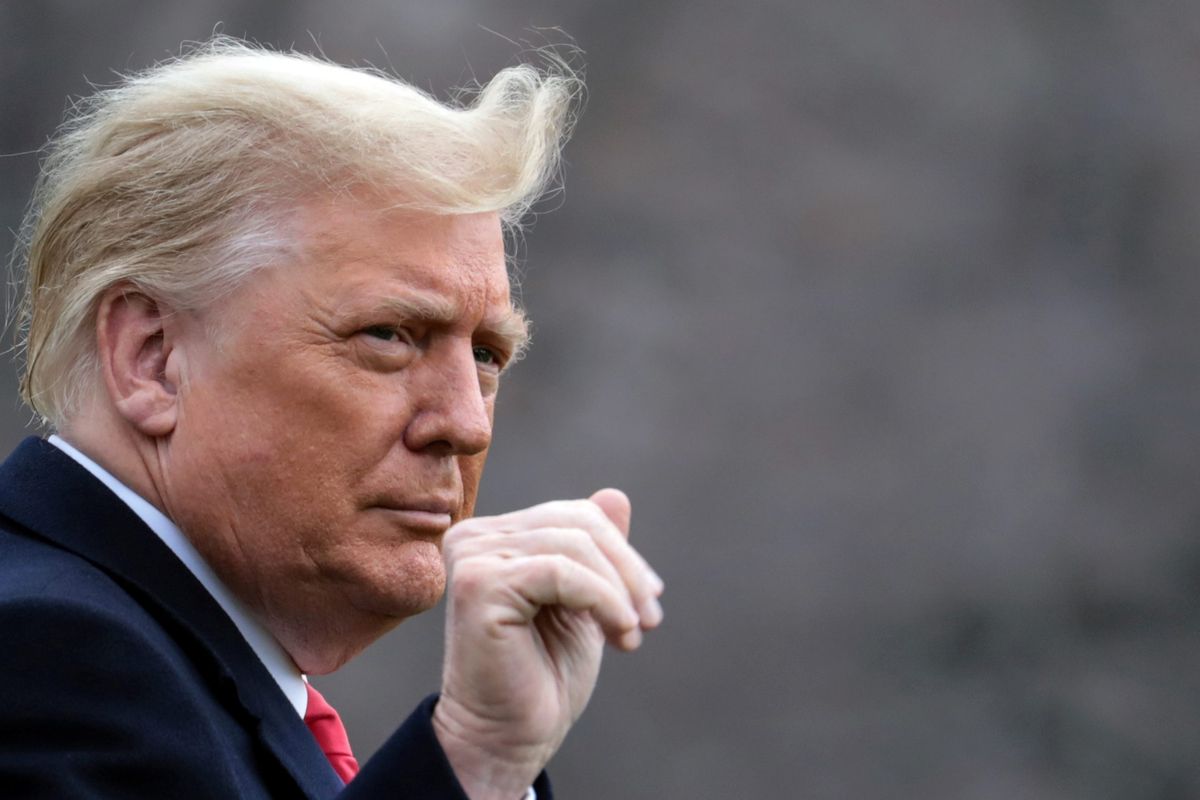How has US-China trade evolved under President Trump?

A few minutes every morning is all you need.
Stay up to date on the world's Headlines and Human Stories. It's fun, it's factual, it's fluff-free.
As President Donald Trump’s term now comes to an end, the future of US-China relations will likely remain volatile under President-elect Joe Biden.
The United States’ trade relationship with China has dominated President Donald Trump’s time in office, which shouldn’t come as any surprise given the president’s tough talk on China during his 2016 presidential campaign.
During that campaign, Trump often spoke critically of US-China trade relations, at one time claiming that China was responsible for “the greatest theft in the history of the world” in its trade with the US.
Despite Trump’s harsh rhetoric, the US and People’s Republic of China agreed on a “Phase One” trade deal in January 2020, which Trump claimed to be the first step in a more equitable relationship between the two countries.
Much has changed since then. The Trump administration has intensified its economic conflict with China during the coronavirus pandemic, targeting, in particular, Chinese-owned social media apps and the Chinese technology industry’s access to crucial semiconductor technology.
With a new administration set to take the reins in January 2020, TMS looks at where the US-China trade deal stands now.
Phase one
President Trump’s harsh rhetoric of China extends all the way back to the initial days of his campaign.
“We can’t continue to allow China to rape our country, and that’s what we’re doing,” Trump claimed in May 2016.
Beginning in 2018, President Trump inaugurated a full-blown trade war against China, with both sides ratcheting up tariffs on goods.
In response to the economic dislocation caused by the trade conflict, the Trump administration began a “Market Facilitation Program,” providing billions of dollars in subsidies to American farmers whose goods would have previously been exported to China.
In January 2020, the US and China agreed on a Phase One trade deal, which President Trump hailed as a “momentous step, one that has never been taken before with China toward a future of fair and reciprocal trade with China.”
Under the terms of the deal, China committed to buying an additional US$200 billion worth of American goods by 2021, which would slightly cut the long-standing trade deficit between the two countries.
However, the trade deal was just as significant in what it was lacking. The deal didn’t address US economic pressure against Huawei Technologies Ltd. and access for foreign financial firms into China and tariffs between the two countries remained significantly higher than before the trade war began.
Future
US-China trade negotiations, following the agreement of the Phase One deal, were then upended by the coronavirus pandemic and a subsequent further breakdown in US-China relations.
Despite the agreement in January being hailed as a “momentous step” by President Trump, the Trump administration subsequently intensified sanctions on Chinese corporations.
In particular, Chinese-owned social media platforms came under fire, as did telecoms and smartphone giant Huawei Technologies, which has been subject to escalating sanctions and blacklisting, including efforts to keep the company from gaining access to semiconductor technology that underpins many modern devices.
With President Trump’s term set to end in less than three weeks, there are signs that tensions will remain.
A bipartisan consensus has formed around the idea that the US should take a hard-line against China and what are seen as China’s abuses, both internationally and domestically, on economic, technology and human rights issues.
President-elect Joe Biden has also stated he would not immediately overturn President Trump’s Phase One trade deal, accusing China of “abusive practices” such as “stealing intellectual property, dumping products, illegal subsidies to corporations,” on which his administration would adopt policies to combat.
There are also signs that China has failed to meet the requirements laid out by the Phase One deal, with its purchases of US goods and services only having reached about half the level stipulated by the deal as of October.
China, meanwhile, is busy pursuing an agenda of its own.
In November, China became one of 15 countries in the new “Regional Comprehensive Economic Partnership” (RCEP), the largest free-trade bloc in the world, which, notably, excludes the US.
The trade bloc represents an expansion of Chinese influence over a region traditionally valued by the US. The bloc includes allies of the US like Japan, Australia and South Korea, all of whom have agreed to gradually reduce tariffs and engage in free trade with China.
As President Trump’s term now comes to an end, the future of US-China relations will likely remain volatile under President-elect Biden.
However, there are certain to be differences between how Biden approaches China. For one thing, Biden is likely to deal with China on a multilateral basis, involving American allies in any trade or diplomatic disputes.
This approach, as opposed to the “go it alone” stance adopted by President Trump, may prove more successful in forcing China to negotiate with the US on reasonable terms and may paint a brighter future for any trade deal between the two countries.
Have a tip or story? Get in touch with our reporters at tips@themilsource.com




Comments ()